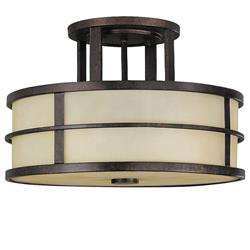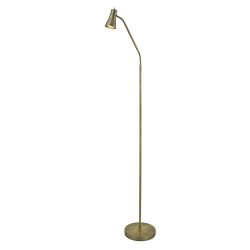How to Light Your Bathroom
Bathrooms vary greatly in size, so depending on your size, you'll have different lighting options available to you. Whatever size your bathroom though, you'll want to pick the right lights for a homely and classy vibe that makes it feel like you're in a hotel suite.
After reading our helpful guide, you can visit our wide range of bathroom lights here.
Safety first – IP ratings, Bathroom Zones and Switches
It's first thing to consider is the IP rating of your bathroom lights. IP rating stands for ingress protection, and it tells us the level of protection lights have against solid objects and water.
It's displayed by a two-digit number – the first digit tells you how effectively lights prevent solid objects like dust accessing the hazardous parts, while the second digit indicates protection against moisture.
You can learn all about it here.
Bathroom Zones
Depending on where your lights are in the bathroom, they will need to have a certain IP rating to meet safety regulations. Bathrooms are separated into different zones, based on the amount of contact with water. The three zones are numbered from 0-2.
Zone 0 - Inside the bath or shower itself. Fitting must be low voltage, (max 12v) and have at least IP67.
Zone 1 - The area above the bath or shower. Minimum rating of IP45 is required but it is generally accepted that IP65 is to be used.
Zone 2 - An area stretching 0.6m outside the perimeter of the bath and to a height of 2.25m from the floor. In this zone an IP rating of at least IP44 is required. The area 0.6m around the sink is also included in zone 2.
Outside Zones - anywhere outside zones 0,1 and 2 where no water jet is likely to be used. No special IP requirements, however, lights with an IP rating of at least IP20 are recommended.
Types of Bathroom Light
Now that we've covered safety, let's look at the different types of lights you can choose from for your bathroom.
Recessed Ceiling Lights
Sleek, stylish and easy to install, recessed downlights provide a bright ambient light source across a wide radius.
Suitable for low or high ceilings, they are a popular choice for many homes. They work well in a range of bathroom sizes – there is no real limit to how many you can install, meaning they can cover a wide space or illuminate smaller bathrooms with just a handful of lights.
Shower lights can be used to spotlight areas like the shower or bath. Ideally, set up these lights to work independently from your main light source. That way you can pick and choose when the levels of brightness and only use these highlighters when you need them.
Flush Mounts
Flush mounts are brilliant for variety – there are many styles and designs to choose from. From simpler, contemporary styles to luxury designs like chandeliers, you can have fun picking a statement light to make your bathroom feel special.
Chandeliers create a classy, elegant look that makes your bathroom feel like one from a 5-star hotel. You can choose from smaller fittings to larger pieces, to fit your space.
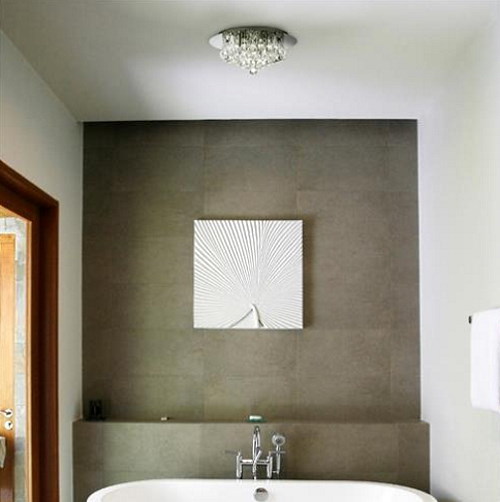
A flush mount ceiling light will be the centrepiece of your bathroom, so consider carefully where you want to place it before you buy.
They differ from recessed downlights and spotlights as they spread light more evenly across a wider area, so typically you'll only have one fixture per bathroom.
Spotlights
An alternative to recessed downlights, spotlights perform in a similar way, shining light directly down, with multiple fixtures usually set up to illuminate a whole room.
There are a few styles of spotlights, they come in track fixtures, flush mounted or as single fixtures. So, you can choose single fittings with multiple lights, or several single fixtures spread across the ceiling.
Similarly to recessed downlights, spotlights can be used as a highlighter over certain areas or objects. The advantage of spotlights is they can be angled to beam light over specific points, so you can play around and create different lighting effects.
Mirror Lights
Your overhead, general light source is complemented by mirror lighting that creates flattering reflection. They mix function and style, helping you perform tasks like shaving or doing your hair in the morning.
It's recommended you place lights on the sides of your mirror, rather than above to create a flattering light. A light placed either side of the mirror evenly illuminates both sides. A light above will highlight the top part of your face, creating unflattering shadows around your eyes and nose.
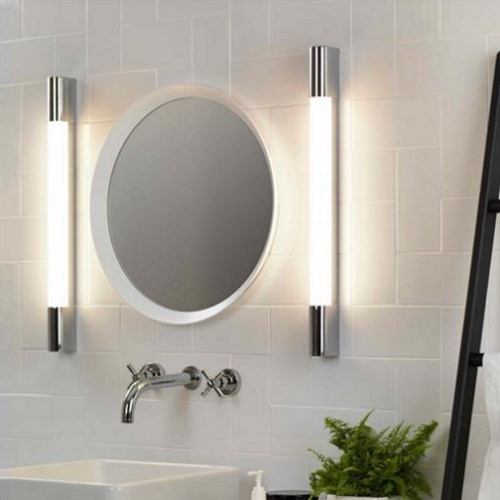
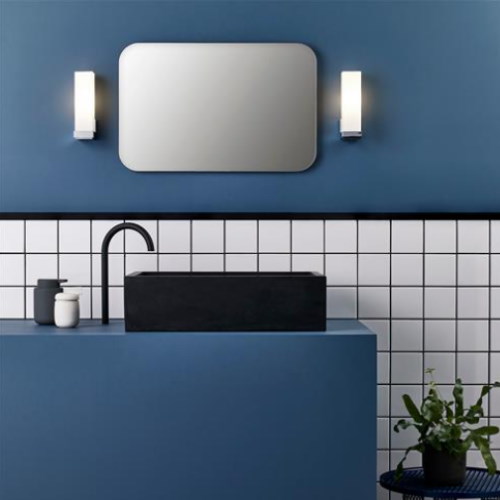
That being said, a stylish wall sconce or strip lamp above a mirror can work perfectly – just make sure the light isn't too bright. It varies with mirror size, but for a general guide 1200 lumens is the ideal brightness – this is around 80 watts for incandescent lamps or 15 for LED.
Confused about Lumens? Click here for our guide on lux and lumens.
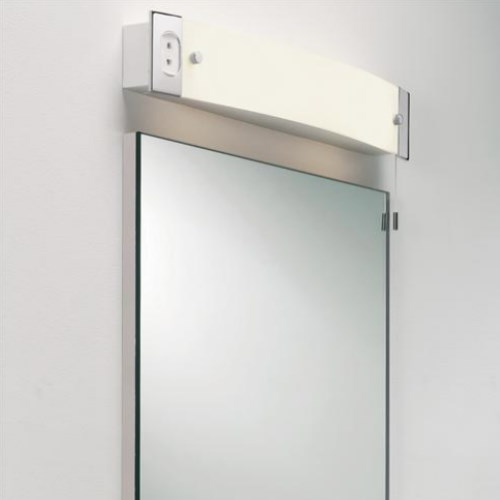
Two wall lights placed on either side of the mirror are ideal, but you can also go with LED strips. Strips offer a cool colour temperature – perfect for doing makeup or shaving.
Cabinet Lighting
Like in the kitchen, having some lighting for your cabinets is a great way to add another layer of light to your bathroom. It acts as task lighting, helping you see what's in the cabinet, while also creating a warm mood and accenting the shape of your bathroom cabinets.
LED strip lighting is versatile and cost-efficient for this. You can use them for cabinets, mirrors and walls and they play the role of task and accent lighting equally well.
Whichever lights you choose, typically you want them to be the same length as the mirror, or thereabouts.
Wall Mounted
Bathroom wall lights don't have to be limited to the mirror. Mirror lights are great but are largely functional. If you have the space, try adding wall lights to accentuate areas of the room. This builds another layer of light, making the room sparkle and feel more uplifting.
You can choose strip lamps, like we mentioned for mirror lighting, but single spotlights and wall lamps are better decorative choices.
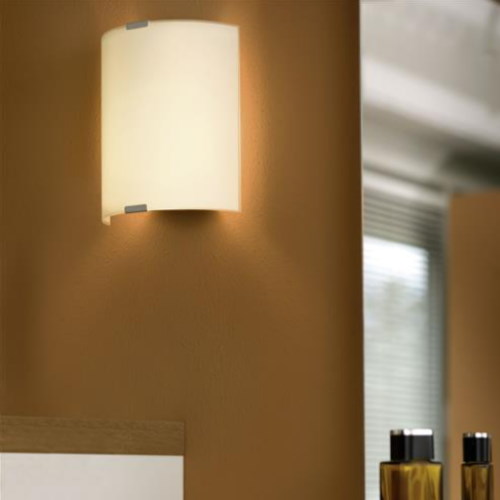
Recessed Uplights
Another great option to build lighting layers is recessed uplights, particularly in larger spaces. Fit them into the floor around your bathtub or walk-in shower entrance, to spotlight them and create atmosphere. Or create fancy lighting effects by fitting uplights in shelves and other surfaces.
Top tip - Perfect your bathroom with natural light
Take your bathroom to the next level by making the most of natural light. Nothing can substitute natural light - it's good for wellbeing as well as design.
Pay attention to the amount of natural light coming in, and the direction it comes from throughout the day. Placement of light fittings should aim to boost the natural light and complement it, without being overpowering. Most bathrooms have limited natural light, but if you have a good source then try and make good use of it.

